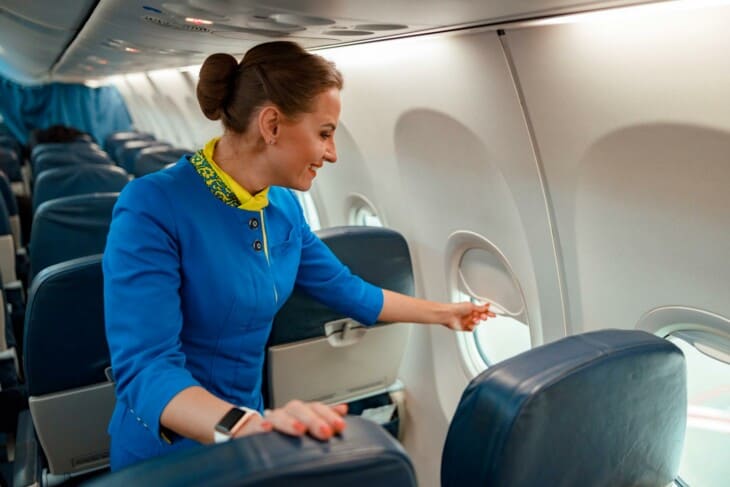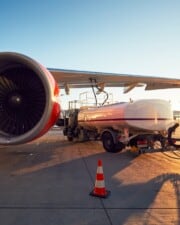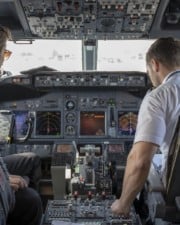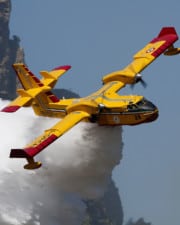A flight purser is a vital role within the cabin crew of an aircraft, often seen as the senior flight attendant or cabin manager. They are responsible for overseeing the entire cabin crew, ensuring passenger comfort, and maintaining high standards of safety and service. This role is crucial in the aviation industry, as it requires a blend of leadership, customer service, and emergency response skills.
In the bustling world of air travel, flight pursers serve as the linchpin between the cabin crew and the rest of the aircraft operations. Their responsibilities extend beyond the traditional role of a flight attendant, encompassing management, coordination, and decision-making duties. Understanding this role is essential for anyone interested in a career in the aviation industry or looking to appreciate the complexities of airline operations.
The flight purser is not just an elevated flight attendant but a multifaceted professional skilled in various aspects of aviation hospitality and safety. With their extensive training and qualifications, flight pursers ensure that every journey is not only comfortable, but also adheres to the highest safety standards. This blog post will delve into the various aspects of being a flight purser, from their responsibilities to the career opportunities available in this dynamic role.
Responsibilities of a Flight Purser
Managing Cabin Crew
The primary responsibility of a flight purser is to manage and lead the cabin crew. This includes assigning tasks, coordinating activities, and ensuring that all crew members are well-prepared for the flight. A flight purser must be an effective leader, capable of motivating and guiding their team to provide exceptional service while adhering to airline policies and procedures.
Ensuring Passenger Safety and Comfort
Flight pursers are also responsible for the overall safety and comfort of passengers. This involves conducting safety briefings, overseeing the cabin during the flight, and addressing any passenger concerns. They play a crucial role in ensuring that the cabin environment remains pleasant and secure throughout the journey.
Handling In-flight Emergencies
In case of in-flight emergencies, the flight purser takes the lead. They are trained to handle a variety of situations, from medical emergencies to security issues. Their ability to remain calm and decisive under pressure is critical in managing such incidents effectively and ensuring passenger safety.
Qualifications and Training
Educational Requirements
Aspiring flight pursers typically need a high school diploma or equivalent, although a degree in hospitality, tourism, or a related field can be beneficial. Some airlines may have specific educational requirements, so it’s important to research the prerequisites of your preferred airline.
Training and Certification Process
After meeting the educational requirements, candidates undergo rigorous training and certification. This includes learning about aircraft safety procedures, emergency response techniques, and customer service standards. The training is both theoretical and practical, ensuring that flight pursers are well-equipped to handle their duties.
Skills Required

Communication and Leadership Skills
Effective communication and strong leadership are essential for a flight purser. They must be able to convey information clearly to both passengers and crew members and lead their team efficiently, especially in challenging situations.
Problem-solving Abilities
Flight pursers often encounter unexpected challenges and must be adept at problem-solving. This includes quickly assessing situations, making informed decisions, and resolving issues to ensure a smooth flight experience.
Customer Service Expertise
Exceptional customer service is a hallmark of a skilled flight purser. They should be attentive, empathetic, and capable of handling a wide range of passenger needs and requests with professionalism and grace.
Career Opportunities
Advancement within the Airline Industry
A career as a flight purser opens up numerous opportunities for advancement within the airline industry. With experience, pursers can move into higher management roles, training and development, or even transition into other areas of airline operations.
Potential for International Opportunities
Given the global nature of the aviation industry, flight pursers often have the opportunity to work on international routes, exposing them to different cultures and destinations. This aspect of the job can be incredibly rewarding for those who enjoy travel and cultural exchange.
In conclusion, the role of a flight purser is multifaceted and demanding, requiring a unique blend of skills and qualities. From managing cabin crew to ensuring passenger comfort and safety, the responsibilities of a flight purser are critical to the smooth operation of an aircraft. With the right qualifications, training, and skills, a career as a flight purser can be both rewarding and enriching, offering opportunities for personal and professional growth within the dynamic aviation industry.
Why is it called a Purser?
The term “purser” has its origins in maritime tradition, where it referred to an officer on a ship responsible for handling money, paperwork, and valuable items. In the context of aviation, the role evolved to signify a senior member of the cabin crew with additional administrative and managerial responsibilities.
The term was adopted from sea to air travel, maintaining the essence of the role as one involving oversight, management, and often financial responsibilities. In both maritime and aviation contexts, the purser is crucial for the smooth operation of services, handling both crew management and various operational aspects aboard ships and aircraft.
What is a Flight Purser’s Salary?
The salary of a flight purser varies widely depending on factors such as the airline, geographical location, experience, and seniority. Generally, flight pursers earn more than typical flight attendants due to their higher level of responsibility and managerial duties.
In the United States, for example, a flight purser’s salary can range from approximately $40,000 to over $80,000 annually, though this can be higher for major airlines or with additional years of experience.
Salaries in other countries may differ based on the local aviation market and economic conditions. Additionally, benefits such as travel perks, health insurance, and retirement plans can also be part of the compensation package for flight pursers.
What is the Difference Between a Steward and a Purser?
The main difference between a steward (or flight attendant) and a purser lies in their roles and responsibilities on an aircraft. A steward is primarily responsible for ensuring passenger comfort and safety, attending to their needs, conducting safety demonstrations, and handling in-flight services like meals and beverages.
In contrast, a purser holds a more senior and managerial role. As the chief flight attendant, a purser oversees the entire cabin crew, manages in-flight operations, coordinates with the pilots, and handles administrative duties. While stewards focus on direct passenger service, pursers are responsible for the overall management and smooth functioning of the cabin crew.
Related Posts














